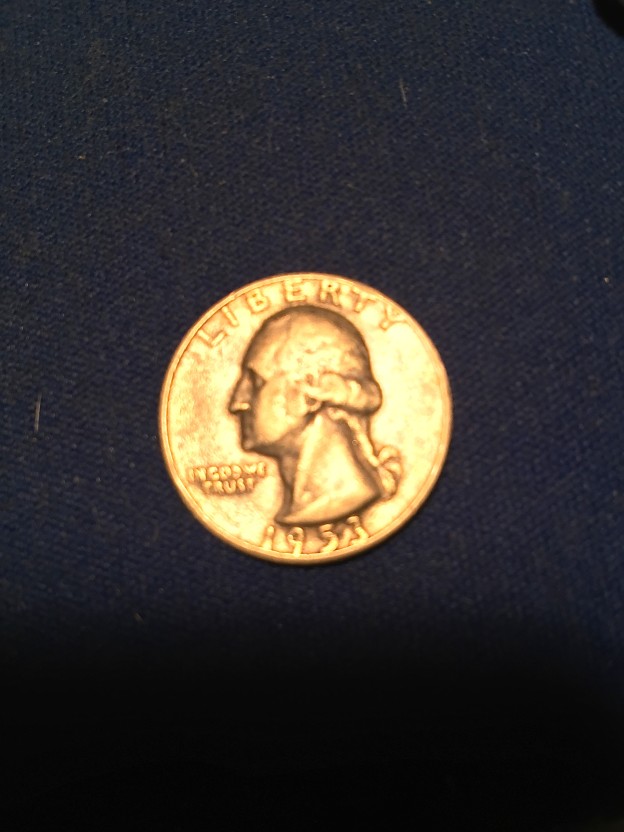I’ve always been something of a coin nerd.
It began when dad got me into collecting wheat pennies, the early coins minted from 1909 to 1955. I’m not sure why dad liked them, but I hunted them like Ahab on a bender. We tallied 147 of them. They may still lay congregated somewhere, in an unused beer stein at the house (dad, unlike Ahab, wasn’t much of a drinker).
I’m not sure why dad liked them, but I hunted them like Ahab on a bender. We tallied 147 of them. They may still lay congregated somewhere, in an unused beer stein at the house (dad, unlike Ahab, wasn’t much of a drinker).
As I got older and into magic, I extended my geekreach to larger coins: half-dollars, silver dollars. I still pester friends traveling overseas to collect the coinage of the land. I have several arcade tokens I’ve kept simply because of their heft and shine.
Recently, cleaning out a drawer, I came upon a quarter that saved itself from the change jar. That’s where all coins typically go, to be amassed and then wasted on something like a magic trick or battery-operated toy or some such equivalent of beanstalk seed.
But this quarter caught my eye. It was dingy, beaten up, clearly around the block a few times. Still, its year — 1953 — shone like a new mom. I’m still not sure why I kept it. 1953 isn’t a memorable year for me, nor an important number.
But the more I thought about the coin, the more valuable it became.
It must have sparkled like Waterford when it was minted, either in Philly, Denver or San Francisco.
Who was the first owner? How many has it seen? Where has it been traveling for the past 62 years? Did it once jingle in a president’s pocket? Help Bob Dylan buy a pack of smokes? Sit in a kid’s first piggybank?
I began to research the year. Gas was 22 cents a gallon. Bread was 16 cents a loaf. The average annual income was $4,011 a year.
Then, another surprise: My quarter, probably handed to me in a handful of change at Yummy Donuts, was actually worth $2.55. Apparently, the U.S. Treasury put more silver in coins back then, when we paid our debts. One website said that, if it were struck at a certain mint, it could be worth as much as $6.
But this coin’s not for sale.
I know that when I’m gone, the coin will re-enter America’s economical orbit. Maybe it will wind up in a parking meter (for the hover cars we’ll all be riding, right?). Or Yummy Donuts. Or Bob Dylan’s great-great-granddaughter’s first piggybank.
For now, though, it remains safe here, in the admiring hands of a nerd in Van Nuys who took a shine to its shine. For we all have one, don’t we? We all are one, aren’t we? Looking to catch the light at the right angle, to rest among the treasured, to announce to the world: Kilroy was here.
It’s funny how priceless a thing becomes with just a little attention.










